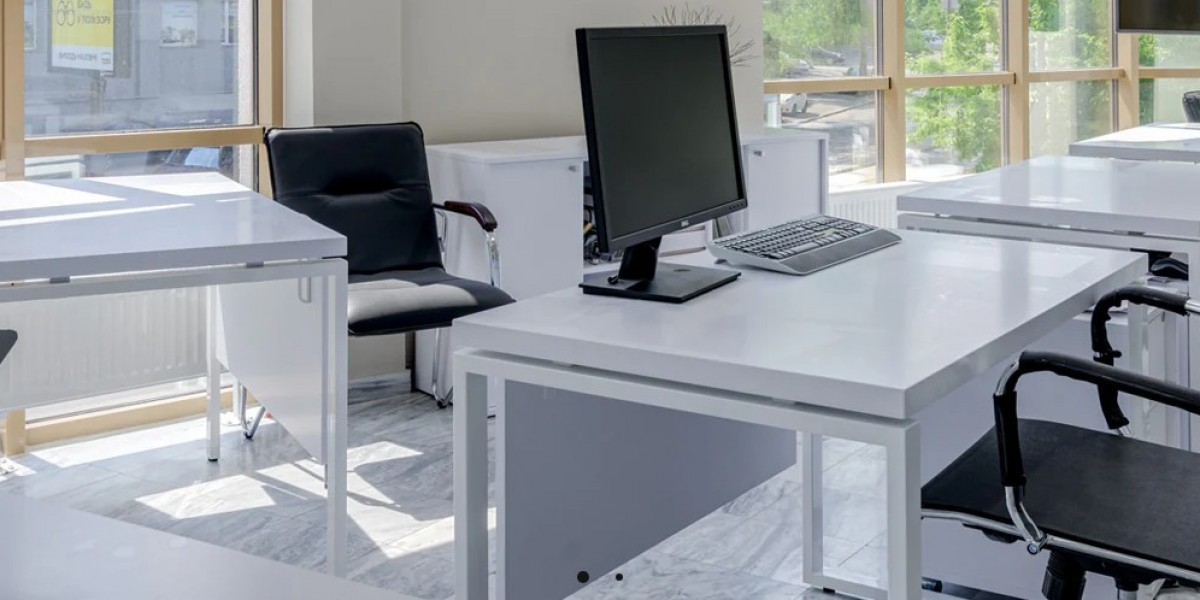The modern hybrid workspace combines the flexibility of remote work with the structure of in-office collaboration, requiring office furniture that can adapt to diverse needs. Innovative furniture solutions are key to supporting this dynamic work environment, ensuring that employees remain productive whether theyre working in the office or remotely. Here are some cutting-edge office furniture solutions that cater to the modern hybrid workspace:
1. Modular Desking Systems
- Flexibility and Adaptability: Modular desks can be rearranged to suit different team sizes, collaboration needs, or solo work. This furniture can be quickly reconfigured for open-plan layouts, private workspaces, or collaborative clusters.
- Examples:
- Foldable Desks: Desks that can be easily folded and stored when not in use, ideal for offices with shared workspaces or employees who work remotely part-time.
- Desks with Add-On Components: These allow for personalization with removable dividers, extra shelving, or storage options that can be added or removed as needed.
2. Sit-Stand Desks
- Promoting Health and Comfort: Sit-stand desks offer flexibility by allowing users to switch between sitting and standing throughout the day, which promotes better posture and reduces the negative effects of prolonged sitting.
- Innovative Features:
- Electric Height Adjustment: Advanced models have motorized systems for effortless height adjustments at the push of a button.
- Memory Settings: Some desks can store custom height settings for different users, which is perfect for shared workstations.
3. Multi-Purpose Meeting and Collaboration Furniture
- Hybrid Collaboration: For hybrid work environments, furniture that supports both in-person and virtual collaboration is crucial.
- Examples:
- Mobile Whiteboards and Collaboration Walls: These can be used for brainstorming during in-person meetings and as backdrops for virtual calls, enhancing the experience for both remote and in-office participants.
- Adjustable Conference Tables: Tables with built-in technology (like wireless charging and cable management) and adjustable heights can adapt to different types of meetings and collaboration styles.
4. Privacy Pods and Phone Booths
- Private Spaces for Focused Work: With hybrid work, offices need flexible spaces for deep, focused work or confidential calls. Privacy pods and phone booths provide employees with soundproofed, private areas within an open office setting.
- Innovative Features:
- Ventilation Systems: These enclosed spaces often come equipped with fans and lighting controls for comfort.
- Integrated Technology: Some booths feature built-in power outlets, USB ports, and even video conferencing capabilities for seamless remote meetings.
5. Convertible Furniture
- Space Optimization: Convertible furniture is ideal for hybrid work environments, where space usage may fluctuate depending on the number of employees in the office on a given day.
- Examples:
- Convertible Sofa Desks: These function as both seating areas and workstations, allowing spaces to transition from lounge areas to productive work zones.
- Folding Tables and Chairs: Easily storable, these can be set up or taken down depending on whether the space is needed for meetings, workstations, or events.
6. Agile Seating Solutions
- Flexibility for Different Work Styles: In hybrid workspaces, not everyone may need a dedicated desk every day. Agile seating solutions allow for quick adjustments depending on the tasks and the number of employees in the office.
- Examples:
- Hot Desking Chairs: Chairs that offer ergonomic support and adjustability, but are easy to move and can be shared among employees rotating through the office.
- Mobile Lounge Seating: These lightweight chairs and sofas can be easily rearranged to accommodate group work, individual tasks, or impromptu meetings.
7. Smart Office Furniture
- Technology Integration: Smart furniture incorporates technology to optimize workspace efficiency and comfort, an essential feature for modern hybrid offices.
- Examples:
- Desks with Integrated Charging: Some smart desks feature built-in wireless charging pads, USB ports, and cable management to keep workspaces organized and efficient.
- Smart Desks with Sensors: These desks can track when theyre being used, monitor posture, and send reminders to switch between sitting and standing, promoting healthier habits in the office.
8. Flexible Workstations for Remote Work
- Home-Office Ready: With hybrid work, many employees split their time between home and the office. Portable, compact furniture that works well at home can create a seamless transition.
- Examples:
- Compact Sit-Stand Desks for Home Use: Small enough for home offices but still ergonomic and adjustable.
- Portable Laptop Desks: Lightweight desks that can be easily moved from room to room or between the office and home.
9. Biophilic Design Elements
- Promoting Well-Being: Incorporating natural elements into furniture design, such as live plants or natural materials like wood and stone, can improve mental well-being and enhance the aesthetic of hybrid workspaces.
- Examples:
- Green Walls and Planter Desks: Desks with built-in planters allow employees to keep plants at their workstation, while green walls create a calming environment conducive to focus and creativity.
- Natural Material Furniture: Tables, chairs, and storage units made from reclaimed wood, bamboo, or natural fibers help bring the outdoors inside, boosting mood and productivity.
10. Acoustic Solutions
- Reducing Noise in Open Workspaces: Acoustic panels, soundproof furniture, and noise-reducing materials are essential in hybrid environments where video conferencing and open-plan offices coexist.
- Examples:
- Acoustic Dividers: These help create quieter zones for concentration without completely closing off spaces.
- Acoustic Seating Pods: Specially designed seating with high, sound-absorbing backs that create semi-private work areas while reducing office noise.
Conclusion
The modern hybrid workspace requires furniture that is flexible, adaptable, and technology-friendly. Innovative office furniture solutions like modular desks, privacy pods, convertible seating, and smart technology integration are crucial for creating a productive and comfortable environment that accommodates the needs of both remote and in-office employees. By embracing these innovative designs, businesses can foster collaboration, support employee well-being, and optimize space usage in this new era of hybrid work.






